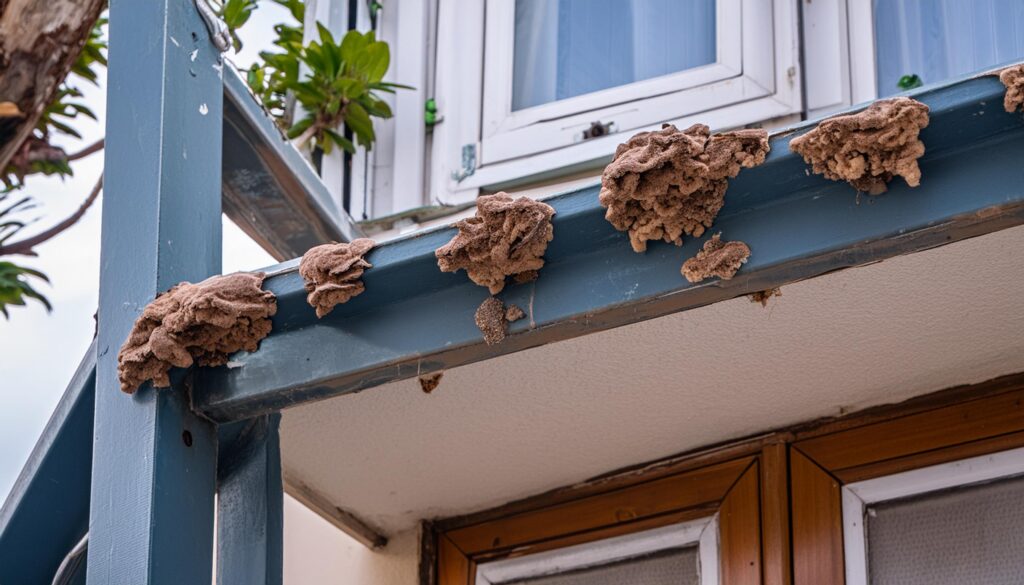What Causes Dry Rot? Unpacking the Culprits

Hey there, deck or balcony owner! Ever spotted a soft, crumbly patch on your wood and wondered, What causes dry rot to sneak in like that? Let’s get straight to it: dry rot is caused by a sneaky fungus—usually Serpula lacrymans—that thrives when wood gets damp, stays damp, and can’t breathe. Think moisture from leaks or rain, trapped in spots with no airflow—like under your deck or behind balcony railings—kicking off a feast that turns solid wood into a brittle mess. It’s not “dry” at all; it needs water to start, then spreads like wildfire if you don’t catch it. Stuff like poor waterproofing or clogged drains sets the stage, and before you know it, your outdoor oasis is at risk.
As a civil engineer who’s wrestled with rot on plenty of projects (and loves a sturdy deck sunset), I’m here to break it down for you. By now, you’ve got the answer: what causes dry rot is moisture meeting wood in a dark, stuffy spot—think wet decks or balconies with no escape for the dampness. Stick with me, and I’ll dig into the science, the triggers, how to spot it, and why checks like balcony inspection matter—all in a way that feels like we’re chatting over a cold drink, not stuck in a lecture hall. Let’s figure out what’s eating your wood!
What Causes Dry Rot: The Science Behind It
So, what’s really going on when dry rot strikes? Picture this fungus as a tiny invader—it needs wood with about 20% moisture to wake up (normal wood sits at 12-15%). Once it’s got that, it sends out thread-like strands called mycelium, munching through cellulose—the stuff that keeps wood strong. I’ve seen it turn a balcony beam into sawdust—creepy but fascinating! The “dry” name’s a misnomer; it starts with water, then keeps going even if things dry out a bit, as long as it’s got food (your wood) and no fresh air to stop it. That’s why it loves hidden corners—under decking, inside joists, behind walls.
Here’s the kicker: it doesn’t just stay put. If conditions are right—damp, dark, still—it spreads, sometimes feet away from the wet spot. I’ve pulled apart decks where rot ran from a leaky seam to the far end—nasty surprise. Balcony inspection or deck inspection can catch it early, but understanding the cause—moisture plus no airflow—is your first defense.
Moisture: The Big Trigger for Dry Rot
Let’s talk water—the numero uno cause of dry rot. It sneaks in from all over: rain pooling on a flat deck, a dripping gutter soaking a balcony, or a bad seal letting leaks creep through. I once found a terrace where water sat under the decking—perfect rot buffet. Wood loves to soak it up, and if it can’t dry out—say, because of poor slope or blocked drains—boom, rot starts. In California, where SB326 and SB721 watch over elevated structures, this is why inspections matter—water’s the enemy they’re hunting.
Fact: Wood needs sustained moisture above 20% for rot to kick in—brief rain won’t do it, but a steady drip will. Coastal areas with fog or rainy spots like Seattle see more rot—local climate plays a role. Fix the source—slope your deck, seal cracks—and you’ve cut off rot’s lifeline.
Poor Ventilation: Dry Rot’s Silent Partner
Next up: airflow—or the lack of it. Imagine wood trapped in a stuffy, dark spot—no breeze, no drying out. That’s dry rot’s dream home. Under decks, behind planters, or in tight balcony corners, still air lets moisture linger, feeding the fungus. I’ve seen decks where owners stacked stuff against the house—blocked the vents, and rot moved in. Deck inspection pros know this—ventilation’s a big check on their list.
Ever notice rot in old sheds or basements? Same deal—stagnant air. Proper spacing—say, 1/4 inch gaps between boards—or vents can stop it. I’ve fixed balconies by adding airflow—simple, but it works. Keep air moving, and rot’s got no shot.
Other Culprits That Cause Dry Rot
Moisture and no air are the stars, but a few sidekicks help dry rot along. Temperature—it loves 40-80°F, cozy for most homes. Untreated wood—raw lumber’s a buffet; treated stuff resists better. Leaks or spills—think a planter that overflows or a roof that drips. I’ve seen a deck rot from a hot tub leak—water plus warmth equaled trouble. Even poor construction—like no flashing where deck meets house—invites it. SB326 inspections catch these flaws; they’re why pros matter.
Data Point: 70% of dry rot cases tie to bad waterproofing, per construction reports—small flaws, big damage.
Spotting Dry Rot Before It Spreads
How do you know it’s dry rot? Look for soft, crumbly wood—poke it, and it caves. Reddish-brown dust, musty smells, or tiny mushroom-like growths are clues too. I’ve sniffed out rot under a balcony before seeing it—nose knows! It hides in dark spots—under decking, behind rails—so DIY checks help, but balcony inspection digs deeper. SB721 inspections use tools like moisture meters—caught a deck’s rot early once, saved thousands.
Case Study: A condo deck looked fine—until an SB721 check found rot in the joists. Fixed for $800 vs $10,000 later. Spot it, stop it—simple.
Prevention: Stopping Dry Rot’s Causes
Beat dry rot by cutting its fuel. Slope decks or balconies—1/4 inch per foot—so water runs off. Seal wood yearly—$50 beats rot repairs. Fix leaks fast—gutters, seals, planters. I tell folks: clear debris, ventilate tight spots—rot hates fresh air. Balcony inspection or deck inspection (like SB326 or SB721) flags risks—January 1, 2025 deadlines loom in California. I’ve saved decks with basic fixes—don’t let rot win.
Prevention Tips
- Slope surfaces: No water pools.
- Seal wood: Yearly shield.
- Ventilate: Keep air flowing.
Connect with DrBalcony
Curious about what causes dry rot or how to stop it? DrBalcony won’t fix it for you, but they’re here to guide you to pros and answers. Want more on balcony inspection, deck inspection, or rot prevention? Reach out to DrBalcony today! Got questions? Drop ‘em in the comments—we’ll answer ASAP to keep your outdoor space rot-free and ready!

